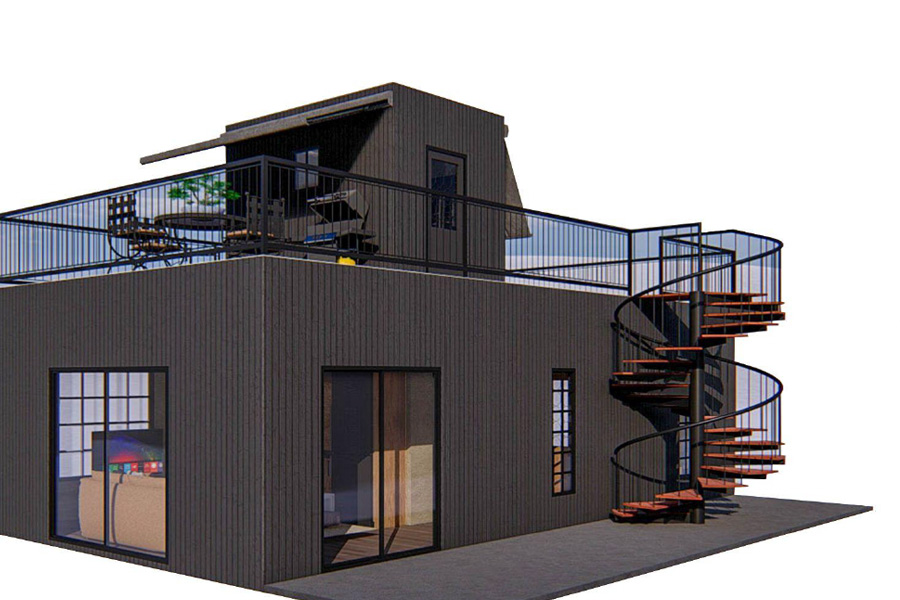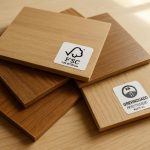Now Reading: 5 Reasons to Choose a Prefab Metal Home Kit Instead of a Tiny Home
-
01
5 Reasons to Choose a Prefab Metal Home Kit Instead of a Tiny Home
5 Reasons to Choose a Prefab Metal Home Kit Instead of a Tiny Home

A new frame for an old dream
Picture the moment you walk into a space that feels both intentional and effortless — sunlight slicing across an open floor, the hum of efficient systems working out of sight, and enough room to breathe and invent. Tiny homes have a charm that’s hard to resist: minimalism, lower price tags, and the romance of pared-down living. But prefab metal home kits arrive with their own cinematic reveal — a roomy interior that refuses to feel cramped, rugged materials that promise longevity, and a paced, practical path from delivery to move-in. If you’re weighing options in 2023 (and beyond), metal home kits deserve a serious look: they sit somewhere between lean living and lasting shelter, marrying clever design with structural muscle.
Clear-span design: space that inspires
One of the most immediate differences you’ll notice is the spatial language. Metal home kits often use clear-span construction, which means no intrusive interior support columns stealing your sightlines. The result is a canvas-length room, open-concept layouts that actually feel open, and design freedom that tiny houses simply can’t match. Want a lofted studio with a mezzanine workspace? A kitchen that becomes a social island? With clear-span metal framing you get the bones to build those scenes — uninterrupted light, flexible partitions, and that cinematic sense of scale where every corner has potential.
Built to weather the story—durability and toughness
There’s a reason steel is the backbone of skyscrapers and bridges: it endures. Prefab metal home kits use engineered steel frames and metal-clad exteriors that shrug off rot, termites, and many of the maintenance headaches wood structures face. From wind-driven storms to heavy snow loads, these kits are designed for longevity, not just initial affordability. The payoff is quiet assurance: fewer surprise repairs, more predictable upkeep, and a home that ages with dignity instead of crumbling in slow-motion. In short, you’re buying a structure that wants to stick around.
Sustainability that makes practical sense
If sustainability for you is more than a buzzword, metal home kits check a lot of boxes. Steel is highly recyclable, and manufactured panels cut waste during production. On-site assembly tends to be quicker and less disruptive than stick-built construction, which can translate to a smaller construction footprint. Plus, modern metal kits are easy to pair with energy-efficient upgrades — high-performance insulation systems, passive ventilation strategies, and rooftop solar setups slide into the plan without dramatic rework. The result is a dwelling that combines circular-material advantages with modern efficiency.
Cost and budget clarity
Affordability isn’t just about the sticker price; it’s about predictable costs. Metal home kits tend to be cost-competitive because factory fabrication reduces on-site labor hours, minimizes waste, and keeps material costs steady. Compared to a custom tiny house built from scratch or a complex site-built home, prefab options often deliver clearer budgets and fewer surprise expenses. You can plan more accurately around delivery, assembly, and finish choices, which means fewer late-stage budget shocks and a smoother path from contract to keys.
Faster assembly—move in sooner
There’s a particular thrill in watching something go from crate to coherent home in a matter of weeks rather than months. Prefab metal kits arrive engineered, measured, and labeled; components fit together quickly under the right crew. That speed not only shortens exposure to weather during construction but also gets you living, hosting, and enjoying life in your new space faster. Whether you’re building a weekend retreat or a primary residence, less time on the build equals more days making memories inside the walls.
Practical lifestyle fit
Choosing a metal home kit is not “better” in some abstract sense — it’s about fit. If you love the minimalist ethos of tiny living, the tiny-home route may still be perfect. But if you crave room to host guests, a workshop, a home office with real square footage, or long-term durability without constant maintenance, metal kits present an elegant middle ground. They let you scale what matters: plenty of usable interior space, options for multi-use rooms, and the structural capacity to expand or customize over time.
Design flexibility and personalization
Prefab doesn’t mean cookie-cutter. Today’s metal kits arrive with a surprising range of styles, finishes, and interior-grid options. From reclaimed-wood accents to oversized windows and open-plan kitchens, you can craft distinct aesthetics while keeping the benefits of prefab construction. The interior layout can be customized with mezzanines, built-ins, and tailored storage solutions — so the end product reads like a bespoke home rather than an off-the-shelf box.
Low-maintenance living for the long haul
There’s an elegance to a home that asks little of you beyond periodic checks. Metal exteriors resist the slow decay that bedevils wood: paint lasts, pests don’t, and structural integrity is less threatened by moisture and mold. While no home is maintenance-free, metal kits lower the day-to-day burden, which leaves you with more time for life and less for chore lists.
Investment perspective
If you consider longevity, replacement cost, and maintenance in the economics of housing, metal home kits often look strong. They can deliver decades of reliable shelter with fewer renovations, making them a pragmatic choice for buyers who aren’t chasing the novelty of tiny-house living but want affordability without fragility. That sense of long-term value often shifts conversations from immediate savings to lifetime cost-effectiveness.
FAQ
How do prefab metal home kits compare in price to tiny homes?
Prefab metal kits are often competitive or cheaper when you factor in durability and lower long-term maintenance, though upfront costs depend on finishes and customizations.
Are metal homes comfortable in extreme weather?
Yes—when properly insulated and ventilated, metal homes can perform excellently in both hot and cold climates.
Can a metal kit be customized to look modern or cozy?
Absolutely—metal kits are a flexible shell that can be finished with wood, stone, glass, and other materials to create many styles.
Do metal homes rust or corrode over time?
Modern steel used in kits is treated and coated to resist corrosion, and proper detailing around joints and fasteners minimizes long-term issues.
How long does construction usually take compared to a tiny home?
Assembly for a metal kit is typically much faster than traditional builds and often quicker than many custom tiny-home projects, depending on site work and finishes.
Are prefab metal home kits eco-friendly?
They can be: steel is recyclable, production reduces waste, and the kits integrate well with energy-efficient upgrades for lower lifetime impact.





















